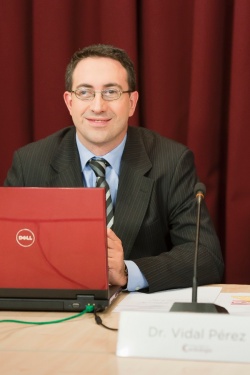Learning from the deceased
The case-based approach holds considerable promise for medical science. In a way, it’s a return to the roots, since this approach was common at the dawn of modern medicine. A case serves as a narrative that can be explored interactively in order to draw a conclusion, determine a course of action, or debate issues in a realistic context. Spanish cardiac imaging consultant Dr Rafael Vidal Perez, will guide ‘cardiologists of tomorrow’ through a case-based session during this year’s ESC. Daniela Zimmermann asked the specialist about the striking title of his session: What can death teach us?


What can death teach the cardiologists of tomorrow?
Rafael Vidal Perez: That the clinical investigation doesn’t end with death of the patient. Some of the cases I’ll be discussing were resolved in the autopsy or by finding an indication of hereditary diseases in the deceased patient’s family. Obviously, every cardiologist tries to get to an accurate diagnosis before the patient dies; but, unfortunately, this isn’t always possible. In those cases, it’s important to continue on the path of clinical investigation beyond the patient’s death. This way, you might be able to save his relatives at a later point in time. In some cases of sudden death the clinician needs to look beyond the common aetiologies. We will be looking at cases where the patient died and others where the patient recovered from a near terminal condition.
Where do the main benefits of the case-based approach lie?
Unusual clinical cases are an excellent way of developing the skills of young cardiologists. In the session we’ll introduce rare, strange cases that you don’t often encounter in everyday clinical practice. Young cardiologists are normally familiar with the typical cases, which might lead them to forget the more unusual clinical presentations and symptoms. It’s important to think outside of the box. In general, young cardiologists are familiar with current clinical trials and standard cardiology curriculum, but the more unusual cases are not included in those studies.
What shape will the session take?
The idea is that we’ll choose the most appropriate cases during the pre-selection. Our focus will be on cases that render the most important insights, of course. The presenter will provide an overview of the case evolution, followed by the differential diagnosis and an explanation of the most important factors to keep in mind when faced with such a case. In the discussion part of the session we’ll try for look for mistakes during the case management and analyse why they were made.
To achieve this, will it be necessary to look beyond the heart?
Exactly. Some cases, especially the ones during my session, are those of systemic disease. Sometimes you have symptoms outside the heart and you find the problem inside the heart. Then sometimes it’s a systemic disease that also affects the heart. Those are the two sides of the problem: a systemic disease that includes all the body’s organs or the heart disease is the first symptom and then proceeds to affect other parts of the body. In some of these cases, you have to broaden scope and look beyond heart diseases. A detective story is a good analogy of how you need to proceed: you look for a clue, it raises a suspicion and you explore the possibilities.
Rafael Vidal Perez MD is Consultant in Cardiac Imaging at the Cardiology Department, Hospital Clínico Universitario de Santiago de Compostela in Spain. During the course of his education in medicine and surgery,) he received several awards, as well as a Master’s degree in Management Tools and Health Research and a Master’s in Clinical Management. A new Fellow of the European Society of Cardiology in 2011, he is among seven professionals in the society’s ‘ESC Cardiologists of Tomorrow’ initiative, as well as an EAE Club 35 Committee Member and a member of the ESC Working Group on Acute Cardiac Care.
25.08.2012











